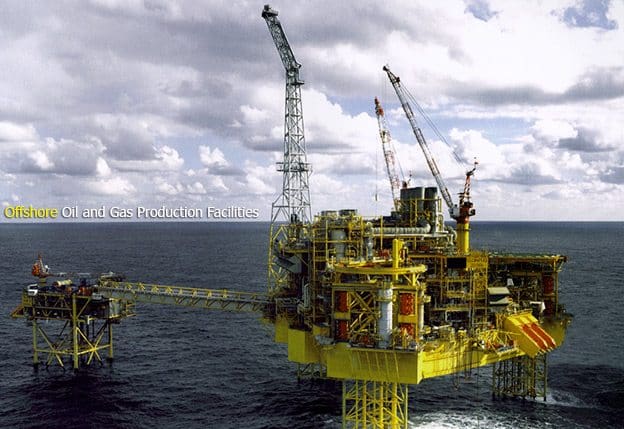
Offshore Oil and Gas Production Facilities (on photo: Offshore oil and gas company in the UAE; constructionweekonline.com)
Introduction to Offshore
Offshore, depending on size and water depth, a whole range of different structures are used. In the last few years, we have seen pure sea bottom installations with multiphase piping to shore and no offshore topside structure at all.
Replacing outlying wellhead towers, deviation drilling is used to reach different parts of the reservoir from a few wellhead cluster locations.
5 most common offshore structures are described below:
- Floating Production, Storage and Offloading (FPSO)
- Tension Leg Platform (TLP)
- SPAR
1. Shallow Water Complex
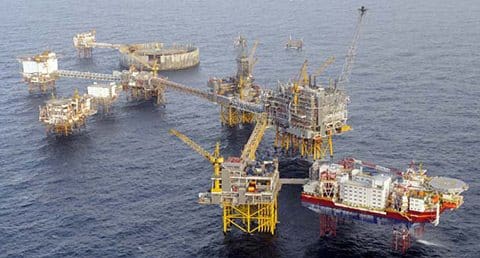
Ekofisk was Norway's first producing field and is also one of the largest on the Norwegian continental shelf. Production started in 1971. With the projects now under development, the lifetime of the field is prepared for production towards 2050.
Characterized by a several independent platforms with different parts of the process and utilities linked with gangway bridges.
Individual platforms will be described as:
- Wellhead Platform,
- Riser Platform,
- Processing Platform,
- Accommodations Platform and
- Power Generation Platform.
The picture shows the Ekofisk Field Centre by Phillips petroleum. Typically found in water depths up to 100 meters.
2. Gravity Base
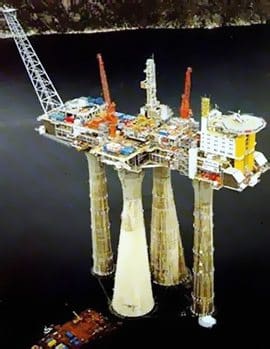
The world’s largest GBS platform, the Troll A during construction
Enormous concrete fixed structures placed on the bottom, typically with oil storage cells in the “skirt” that rests on the sea bottom.
The large deck receives all parts of the process and utilities in large modules. Typical for 80s and 90s large fields in 100 to 500 water depth.
The picture shows the world’s largest GBS platform, the Troll A during construction.
3. Compliant Towers

The compliant tower design was chosen for its ability to withstand hurricane conditions and operate in depths of 2,000ft (610m) // Photo by offshore-technology.com
Compliant towers are much like fixed platforms. They consist of a narrow tower, attached to a foundation on the seafloor and extending up to the platform.
This tower is flexible, as opposed to the relatively rigid legs of a fixed platform. This flexibility allows it to operate in much deeper water, as it can ‘absorb‘ much of the pressure exerted on it by the wind and sea.
4. Floating Production
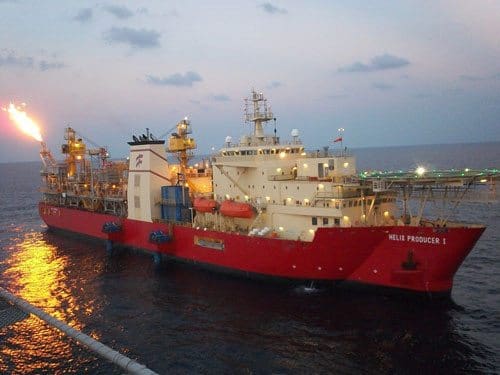
The Helix Producer I DP2 monohull floating production unit is designed to produce hydrocarbons and export to shore via pipeline or tanker.
Floating production, where all topside systems are located on a floating structure with dry or subsea wells.
Some floaters are:
4.1 Floating Production, Storage and Offloading (FPSO)
Typically a tanker type hull or barge with wellheads on a turret that the ship can rotate freely around (to point into wind, waves or current). The turret has wire rope and chain connections to several anchors (position mooring – POSMOR), or it can be dynamically positioned using thrusters (dynamic positioning – DYNPOS). Water depths 200 to 2000 meters.
Common with subsea wells. The main process is placed on the deck, while the hull is used for storage and offloading to a shuttle tanker.
May also be used with pipeline transport.
4.2 Tension Leg Platform (TLP)
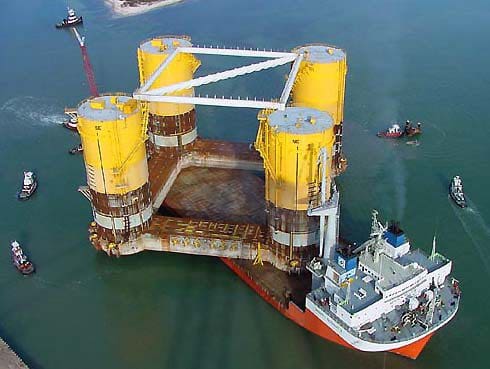
The hull for Shell's deepwater tension leg platform Brutus arrived at Aker's Ingleside yard in Texas (the integration site) in January 2001.
A Tension Leg Platform (TLP) consists of a structure held in place by vertical tendons connected to the sea floor by pile-secured templates. The structure is held in a fixed position by tensioned tendons, which provide for use of the TLP in a broad water depth range up to about 2000 m.
Limited vertical motion. The tendons are constructed as hollow high tensile strength steel pipes that carry the spare buoyancy of the structure and ensure limited vertical motion.
A variant is Seastar platforms which are miniature floating tension leg platforms, much like the semi submersible type, with tensioned tendons.
4.3 SPAR
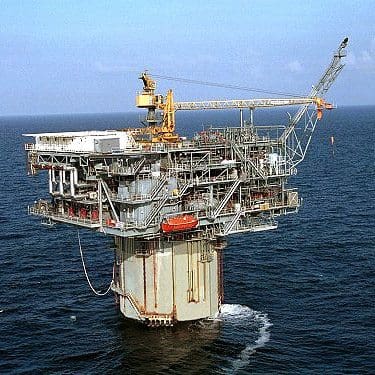
Similar to an iceberg, the majority of a SPAR facility is located beneath the water's surface, providing the facility increased stability
The SPAR consists of a single tall floating cylinder hull, supporting a fixed deck. The cylinder however does not extend all the way to the seafloor, but instead is tethered to the bottom by a series of cables and lines.
The large cylinder serves to stabilize the platform in the water, and allows for movement to absorb the force of potential hurricanes. Spars can be quite large and are used for water depths from 300 and up to 3000 meters.
5. Subsea Production Systems
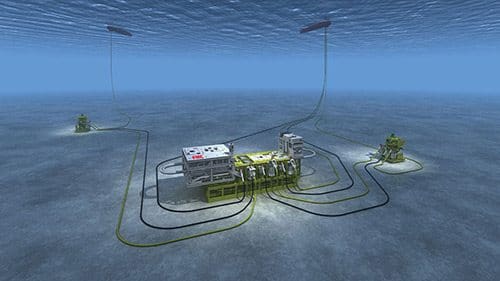
The Marlim subsea separation system on Petrobras’ largest field in the Campos Basin separates heavy oil, gas, sand and water. The system debottlenecks the floating production facility and increases production by removing unwanted water from the production stream at the seabed.
Subsea production systems are wells located on the sea floor, as opposed to at the surface.
The well is drilled by a moveable rig and the extracted oil and natural gas is transported by undersea pipeline and riser to a processing facility. This allows one strategically placed production platform to service many wells over a reasonably large area.
Subsea systems are typically in use at depths of 7,000 feet or more, and do not have the ability to drill, only to extract and transport. Drilling and completeion is performed from a surface rig. Horizontal offsets up to 250 kilometers, 150 miles are currently possible.
Reference: Oil and gas production handbook – ABB ATPA Oil and Gas